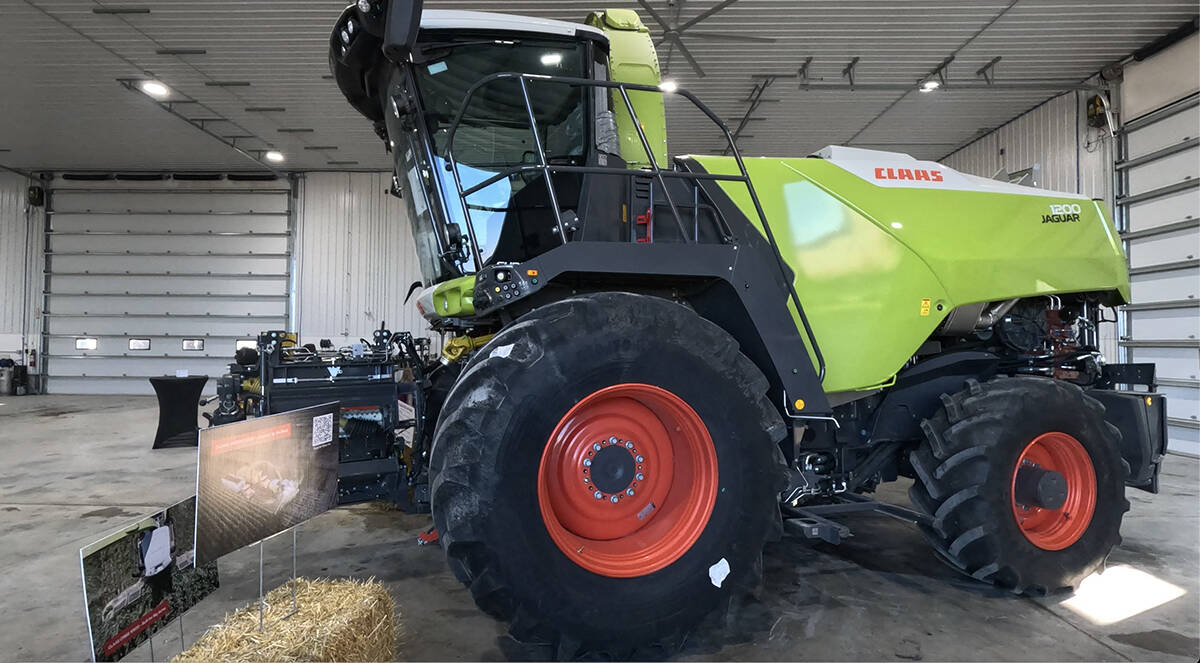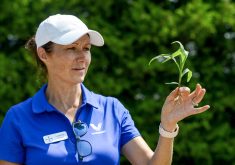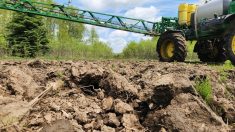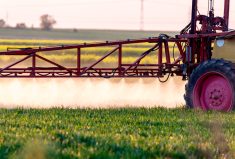From cheap plastic pails to aftermarket tech, sprayer operators find a variety of ways to improve how they and their machines accomplish application jobs.
The 2024 SouthWest Agriculture Conference featured a panel discussion with farmer and sprayer operators Paul Delanghe, Tyler McBlain, and Dan Petker. Moderated by Jason Deveau, application technology specialist with the Ontario Ministry of Agriculture, Food, and Agribusiness, the panelists highlighted a number of useful factory and third-party upgrades.
Investing in an aftermarket guidance system, a CRG, from Alberta-based company Agra-GPS, has been a critical investment for Petker. Although not “the great glory that is green,” the RTK system is compatible with Petker’s John Deere equipment, and saves him around $2,000 a year in subscription fees to John Deere RTK software.
Read Also

Claas brings 1000 Series SP forage harvesters to Canada
In mid-August, Claas unveiled its new line of Jaguar forage harvesters at an event in Visalia, California, deep in the heart of that state’s dairy region.
The CRG also brings much more consistent connectivity, thanks to its use of a European SIM card capable to gaining signal from any cell tower.
Beluga hose drops were another valuable addition, providing more uniform full-plant coverage for in-season fungicide application in corn. Petker says the hoses and nozzles are very light, incurring no kinetic damage to the crop. They are also easy to make and easy to take on-and-off.
“We spray 1500 acres of corn a year with that, and we’ll never spray the other way again,” Petker says. Deveau adds, in his experience, a poor job with the Beluga “is still better than the best job on top.”
For Delanghe, a Cleanfix reversible fan was a winning investment. Although not necessarily an inexpensive implement – the system cost him an additional $7,500 – the effectiveness with which it blows pollen off his sprayer significantly reduces overheating, extending the life of the engine.
Delanghe describes it “like your sprayer sneezing,” and believes the option is now available as an add-on through equipment manufacturers.
Deveau reiterated how much of a problem excessive pollen can be, particularly for custom operators covering a lot of acres, as well as how physically damaging corn plants are to sprayer parts. Homemade, lower-tech solutions – including tarps for wrapping sensitive lines and electronics, as well as shields constructed from five-gallon pails – have helped Delanghe remedy some of these issues.
As for the sprayer tank, Delanghe says the addition of an AccuVolume system has improved his efficiency by allowing for a more accurate view of how much product is left in the reservoir.
Four-wheel steering has made a significant difference for McBlain, who says it improves maneuverability and reducing trampling. He cautions, however, that operators running four-wheel steering systems need to be mindful of how tight turns can affect the sprayer boom.
“The boom whip can be pretty gnarly,” McBlain says, adding the cost for such systems can be quite high, making for a long return-on-investment.
Deveau later discussed the value of recirculating booms – sprayers capable of returning product from boom lines to the reservoir tank. Such systems can save product, and remove the need to empty remaining product while stationary in the field. While recirculating boom systems can be complicated and expensive, Deveau says they are catching on as add-on options from equipment manufacturers.
Finally, continuous-rinse systems were identified by both Deveau and McBlain as an excellent way to clean sprayers while in operation, thus leaving rinsate in the field and affording significant time savings.


















